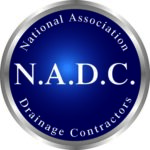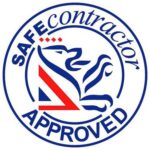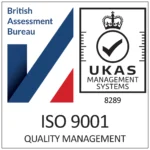-
LSR is a trenchless repair method applied only to damaged sections of pipe (typically lengths of 0.5–1.5 m).
-
A resin-impregnated patch or short liner is inserted into the damaged area, inflated or pressed up against the pipe wall, then cured to form a strong, sealed inner shell.
-
Works well for cracks, joint separation, small collapse deformities, or minor root penetration where surrounding pipe is still sound.
-
Eliminates the need to dig up entire runs — very useful in landscaped areas, under driveways, or where excavation would be invasive.
Localised Structure Repair
Targeted, trenchless repairs to fix damage without full pipe replacement
Localised Structural Repair (LSR) & Patch Repairs in Cumbria
When only small portions of a drain or sewer are damaged — cracked joints, minor fissures, root infiltration points, or joint leakage — there’s no need to replace the entire run. Localised Structural Repair (LSR), also called patch lining, enables us to reinforce and seal just the defective section safely, quickly, and cost-effectively. At Unblock Cumbria, we deliver LSR services across Cumbria and the Scottish Borders, restoring pipe integrity with minimal disruption to surfaces and surroundings.
LSR is ideal for isolated defects. Instead of heavy excavation, we clean the affected part, insert a resin-impregnated patch liner (or similar structural repair material), cure it in place, and verify the result — all within the original pipe envelope.
What Is Localised Structural Repair (LSR)?
Our Core Values
-
Safety First: A flawless safety record is part of who we are.
-
Integrity Always: We act with honesty and transparency in every project.
-
Results You Can Measure: We focus on tangible outcomes, not just promises.
-
Respect for All: We treat our customers, employees, and the environment with equal care.
Why Choose LSR
-
Minimal disruption — Surfaces remain mostly intact (no mass excavation).
-
Cost-efficient — Targets only the faulty section, saving labour, material, and reinstatement cost.
-
Quick turnaround — Repairs often completed in hours, not days.
-
Structural reinforcement — Restores strength and watertightness in that area.
-
Prevents further damage — Stops leaks, ingress, and structural weakening from spreading.
-
Compatible with other methods — If the pipe later deteriorates further, LSR can act as an interim measure before more extensive works.
Our Process
-
CCTV Survey & Diagnosis – We run a camera to locate and characterise the defect — length, severity, surrounding pipe condition.
-
Cleaning & Preparation – The target area is jet-washed to remove grease, debris, roots, silt — ensuring patch adhesion.
-
Patch or Shortliner Selection – Based on the defect, we choose a glass-reinforced felt or fabric mat impregnated with structural resin (epoxy or silicate) sized exactly to the damaged section.
-
Insertion & Inflation / Pressing – The patch is carried in by a bladder or packer, positioned, and inflated to press it firmly against the pipe wall.
-
Curing – The resin cures in place (by ambient temperature, heat, or UV, depending on system).
-
Verification – After curing, we deflate the packer and run a secondary CCTV to confirm correct seating, sealing, and integrity.
-
Site Cleanup & Reinstatement – We restore any minor access points, re-level the area, and leave the site neat.
Why Choose Us?
-
Skilled application of modern LSR techniques by certified engineers
-
Full “inspect → patch → verify” service under one provider
-
Minimal fuss — designed for tight areas, landscapes, and finished surfaces
-
Transparent quotes, photos, and CCTV proof for client confidence
-
Suitable for domestic, commercial, and industrial systems
-
Warranty-backed repairs and maintenance follow-up
We treat patch repair not just as a “temporary fix” but as a responsible, long-term solution when appropriate.
Areas We Cover
We’re proud to serve customers throughout Cumbria and beyond, including:
- Whitehaven
- Workington
- Carlisle
- Keswick
- Wigton
- Kendal
- Windermere
- Penrith
- Barrow-in-Furness
- and surrounding areas across the Scottish Borders.
If you’re unsure whether we cover your location, just give us a call — our friendly team will be happy to help.
Frequently asked questions
What kinds of pipe damage are suitable for LSR?
Best for single cracks, leaking joints, minor distortions, root ingress points, or defective patches while the rest of the pipe remains structurally sound.
Can LSR be used on pipes of any material?
Yes — it’s suitable for materials like PVC, clay, concrete, vitrified clay, pitch fibre etc., provided access and cleaning are feasible.
How long does a patch repair last?
A properly installed patch can last 15–25 years or more, depending on resin quality, pipe environment, and external stresses.
Does patch repair reduce flow capacity?
Minimally — the patch thickness is small and designed to not significantly impact hydraulic capacity unless overused repeatedly.
What if multiple defects are discovered?
If defects are isolated, we can patch each separately. If damage is widespread, we may recommend combining LSR patches with longer relining or eventual full replacement.
Do you still do a CCTV after patching?
Always — final CCTV inspection confirms that the patch is seated, sealed, and the flow is unobstructed.
Get Your Free Quote
Have a cracked section, leaking joint, or localised damage in your drainage system? Call 01900 870 140 or complete our contact form to request a patch repair survey. We’ll help you restore strength — precisely where it’s needed.





